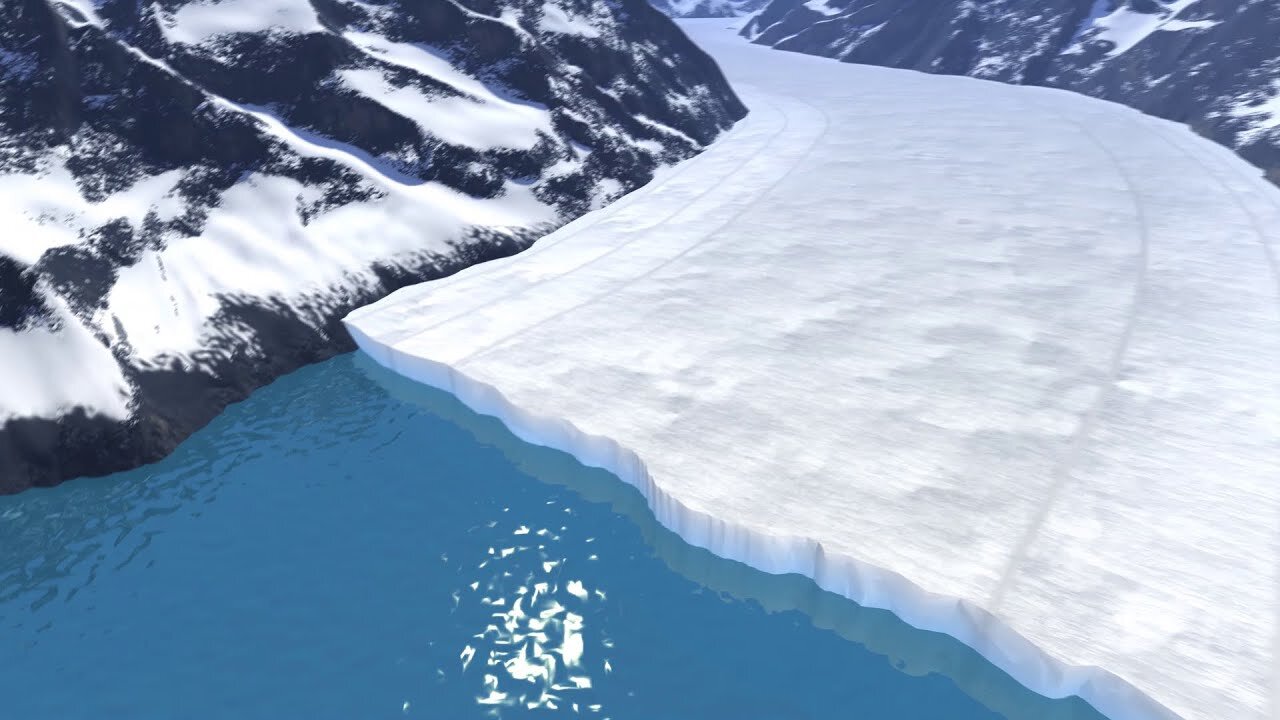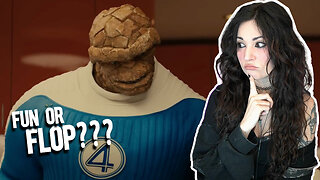Premium Only Content

Animation: How a Glacier Melts
When warm summer air melts the surface of a glacier, the meltwater bores holes down through the ice. It makes its way all the way down to the bottom of the glacier where it runs between the ice and the glacier bed, and eventually shoots out in a plume at the glacier base and into the surrounding ocean.
The meltwater plume is lighter than the surrounding ocean water because it doesn't contain salt. So it rises toward the surface, mixing the warm ocean water upward in the process. The warm water then rubs up against the bottom of the glacier, causing even more of the glacier to melt. This often leads to calving – ice cracking and breaking off into large ice chunks (icebergs) – at the front end, or terminus of the glacier.
Video credit: NASA's Jet Propulsion Laboratory
Esprit Smith (JPL): Lead Producer
Josh Willis (JPL): Lead Scientist and Narrator
This video is public domain and along with other supporting visualizations can be downloaded from NASA Goddard's Scientific Visualization Studio at: https://svs.gsfc.nasa.gov/13761
-
 DVR
DVR
In The Litter Box w/ Jewels & Catturd
23 hours agoGov. Trudeau Agrees to Terms | In the Litter Box w/ Jewels & Catturd – Ep. 734 – 2/4/2025
38.1K18 -
 1:21:03
1:21:03
Russell Brand
3 hours agoBREAK BREAD EP. 13 - WESLEY HUFF
88.7K5 -
 LIVE
LIVE
Game On!
39 minutes agoRoger Goodell is FURIOUS at NFL fans who think Mahomes gets special treatment!
66 watching -
 10:31
10:31
Melonie Mac
2 hours agoMy Fantastic Four Movie Trailer Impressions
5303 -
 2:08:22
2:08:22
The Quartering
5 hours ago20,000 Feds QUIT, DOGE Workers Lives At Risk, Trump Vs Dept Of Education, Brie Larson Based & More
80.8K54 -
 1:23:15
1:23:15
vivafrei
18 hours agoLive with Enrique Tarrio! Jan. 6 Lawfare ON STEROIDS! Proud Boys & Beyond!
83.5K32 -
 DVR
DVR
Savanah Hernandez
2 hours agoEl Salvador offers to take in U.S. prisoners while Elon’s autists take on the deep state
6.64K4 -
 7:12
7:12
Tactical Advisor
4 hours agoBudget 2011 That Uses Glock Mags?! | Fusion Firearms 2025
9.89K -
 58:19
58:19
Ben Shapiro
5 hours agoEp. 2131 - Trump and Musk Bring The CHAINSAW
84K49 -
 1:12:31
1:12:31
Russell Brand
5 hours agoTrump’s Trade Wars: Power Plays and Global Repercussions – SF531
103K36